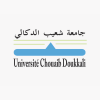Making Irrigation Decisions from Space: Utilizing a New Thermal Remote Sensing Satellite to Protect Food Security
Have you ever questioned if there would be enough food at the store for everyone in your community? If you frequent a grocery store or market, probably not. Every Sunday I go to the grocery store with a list of foods I’ll need for the week and no contingency plan for what to do if there isn’t enough. If something is out of stock, I’ll just go to the next grocery store down the road. We take it for granted that certain foods will always be available for us to purchase. However, many people do not have the luxury of a reliable food source.


















